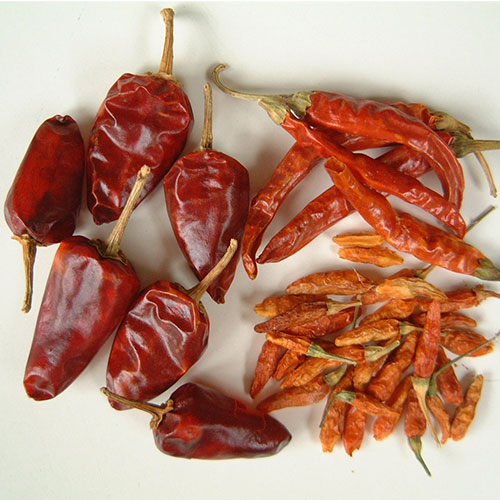Chili CO2-to extract (organic), high colour, 3,1 % Capsaicinoids, DE-ÖKO-013
Product-No.: 049.006
Raw Material:
Capsicum frutescens – Fruit with seeds, dried, from organic farming
Production:
By supercritical fluid extraction with natural carbon dioxide, no solvent residues, no inorganic salts, no heavy metals, no reproducible microorganisms [1]. The extract is standardized with rape seed oil (organic) stabilized with Rosemary Antioxidant (organic) to a capsaicinoid content of 3.1 %.
Ingredients:
see specification
Application:
In herbal medicines for external use, such as salves or warming patches, chili is used to relieve muscle pain, such as back pain [2]. In folk medicine, chili preparations are used for frostbite or arthritis. In addition, folk medicine is known to use chilli internally for hoarseness and sore throat [3].*
The chili extract gives food and beverages a hot pungent flavour.*
Today, a significant number of clinical studies provide substantial evidence that daily consumption of capsaicinoids contribute to weight management through reduction of energy intake. Chili CO2-extracts with capsaicinoids as bioactive ingredients have the potential, if taken regularly, to be used for natural weight-loss [4].*
In cosmetics, chilli extracts are used as skin conditioners and fragrances [5].*
Literature:
[1] P. Manninen, E. Häivälä, S. Sarimo, H. Kallio : Distribution of microbes in supercritical CO2 extraction of sea buckthorn (Hippophae rhamnoides) oils : Zeitschrift für Lebensmitteluntersuchung und -Forschung / Springerverlag (1997) 204: 202-205
[2] Committee on Herbal Medicinal Products (HMPC), European Medicines Agency (EMA) : European Union herbal monograph on Capsicum annuum L. var. minimum (Miller) Heiser and small fruited varieties of Capsicum frutescens L., fructus : (2015) EMA/HMPC/674139/2013
[3] F.C. Czygan, D. Frohne, Chr. Höltzel, A. Nagell, P. Pachaöy, H.J. Pfänder, M. Wichtl, g. Willhuhn, W. Buff : Teedrogen und Phytopharmaka, 3. Auflage. : Stuttgart: Wissenschaftliche Verlagsgesellschaft GmbH 1997
[4] Whiting S, Derbyshire EJ, Tiwari B : Could capsaicinoids help to support weight management? A systematic review and meta-analysis of energy intake data : Appetite, Feb,73:183-8, 2014.
[5] Bundesinstitut für Risikobewertung (BfR) : Zu scharf ist nicht gesund – Lebensmittel mit sehr hohen Capsaicingehalten können der Gesundheit schaden : Stellungnahme Nr. 053/2011 des BfR vom 18. Oktober 2011
